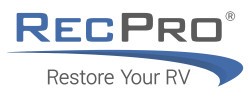Horse Trailer Parts
More than just a simple trailer, a horse hauler is a vital part of living and working in the equestrian life. Most horse parents are continually moving their horses from one place to another. Is it possible to keep your horses at home full-time? Possibly, but unless you have a veterinarian that makes house visits, you will at least need to take your equines for their check-ups once a year. This means you’re going to need a horse hauler. As much money, time, care, and love as you pour into your four-legged children, you want to have the best equipment you can when you are traveling from venue to venue. This includes all the large and small components attached to and installed in, your trailer. RecPro understands how significant your horses are to you, your family, and your business. That’s why we offer the best in trailer accessories in windows and trim ring components in the aftermarket industry.
-


Horse Trailer Feeder Windows Drop Down 30" x 24" - Radius Rounded Corner Design
RecPro®
$329.95SKU: RP-45302424-HW$329.95 -


Horse Trailer Feeder Windows Drop Down 30" x 20" - Radius Rounded Corner Design
RecPro®
$309.95SKU: RP-45302001-HW$309.95 -


Horse Trailer Feeder Windows Drop Down 24" x 24" - Radius Rounded Corner Design
RecPro®
$299.95SKU: RP-45242403-HW$299.95 -


Horse Trailer Feeder Windows Drop Down 20" x 20" - Radius Rounded Corner Design
RecPro®
$299.95SKU: RP-45202001-HW$299.95 -

 $39.95
$39.95
More than just a simple trailer, a horse hauler is a vital part of living and working in the equestrian life. Most horse parents are continually moving their horses from one place to another. Is it possible to keep your horses at home full-time? Possibly, but unless you have a veterinarian that makes house visits, you will at least need to take your equines for their check-ups once a year. This means you’re going to need a horse hauler. As much money, time, care, and love as you pour into your four-legged children, you want to have the best equipment you can when you are traveling from venue to venue. This includes all the large and small components attached to and installed in, your trailer. RecPro understands how significant your horses are to you, your family, and your business. That’s why we offer the best in trailer accessories in windows and trim ring components in the aftermarket industry.
